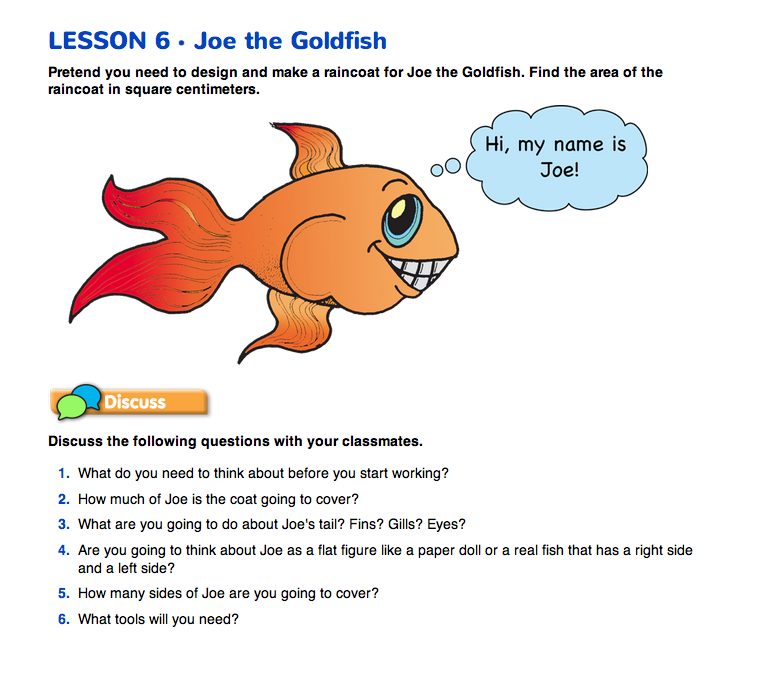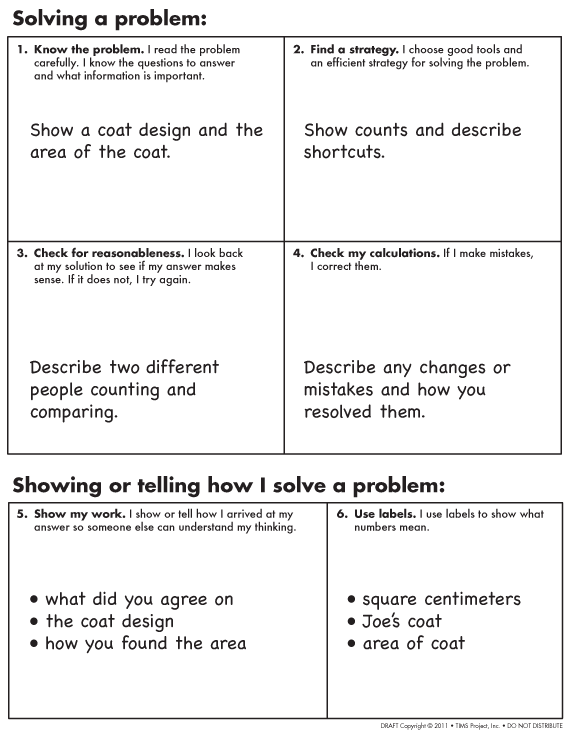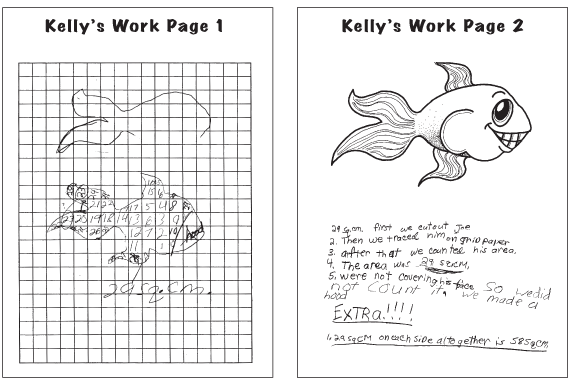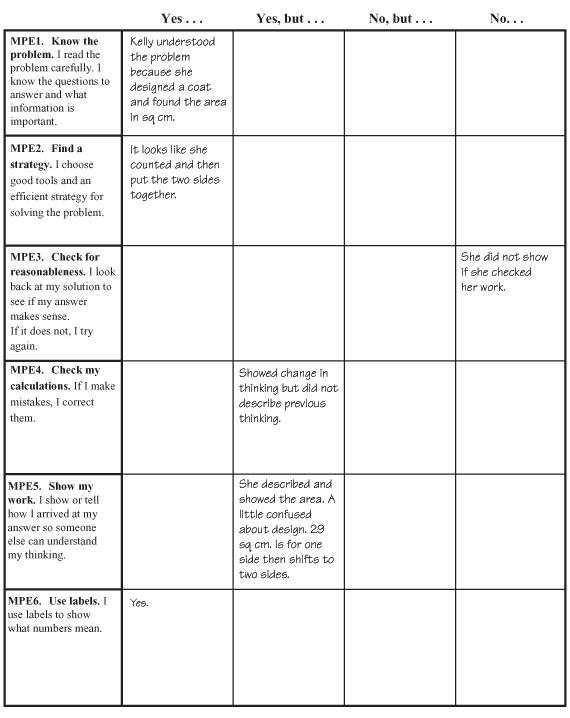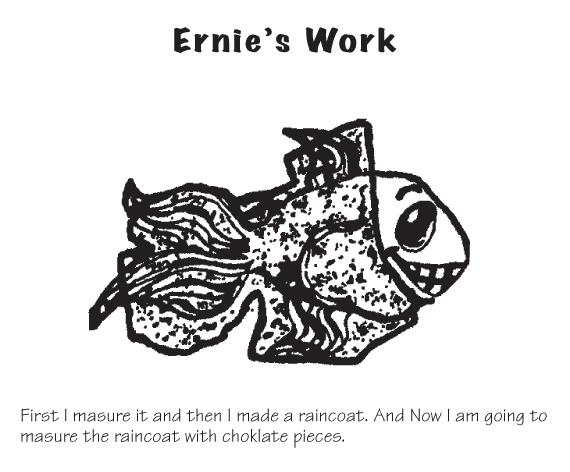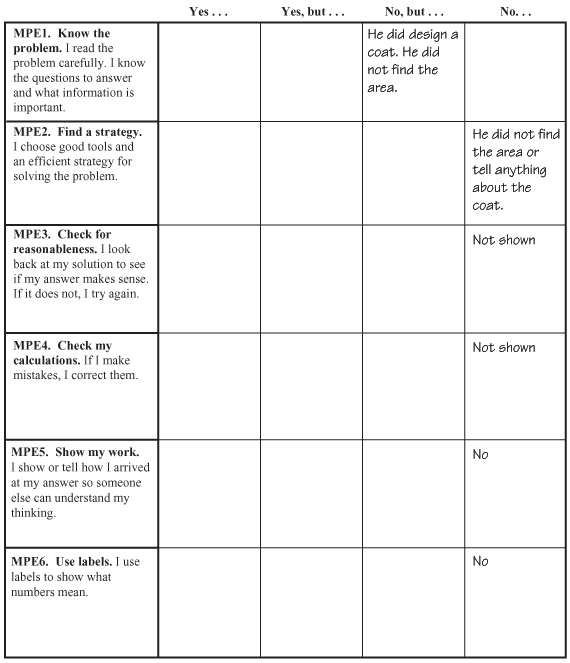Joe the Goldfish
Est. Class Sessions: 1Developing the Lesson
Discuss Constraints of the Raincoat Problem. Organize students into design teams of 2 or 3 students. Refer students to and introduce the problem on the Joe the Goldfish page in the Student Guide. Tell students that they will work with a design team to design and make a raincoat for Joe.
Elicit responses to Question 1 and then ask students to discuss Questions 2–6 with their design team members. The answers to most of these questions should be left to the discretion of each design team. You may want to stress that an important part of this activity is for the design team to work together to make these decisions, design a raincoat for Joe, and show how to find the area of the raincoat. Be sure students know where to find the tools they will need.
Design Teams Solve the Raincoat Problem. Display the Math Practices page from the Student Guide Reference section. Tell students the class will revisit and discuss the Math Practices expectations after students have solved the problem and had a chance to write an explanation.
Distribute copies of the A Raincoat for Joe the Goldfish and the Centimeter Grid Paper Assessment Masters to each design team of students. Give students time to work on the problem.
Discuss Math Practices Expectations. Discuss each Math Practices Expectation taking notes on a display of the Math Practices Notes Master. The notes should help students understand what to look for when evaluating work from another group or revising their own. See Figure 1 for possible student-generated notes.
Ask:
Review Student Work. Choose and display a student work sample to model how to provide feedback and to clarify the Math Practices Expectations as they relate to this problem. Figures 2–5 show sample sets of work and sample feedback notes for two different students to help you facilitate this discussion. Masters for display are also available for the student work in these figures.
Give students a few minutes to look at the student work sample and then provide feedback on a display of the A Raincoat for Joe the Goldfish Feedback Box Master.
Ask:














